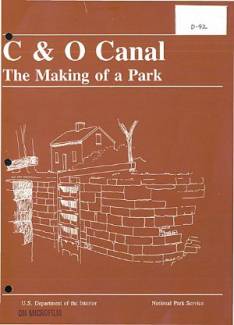Collection Name
About
Chapter 1
UNCLE SAM BUYS A CANAL
In 1901 the Senate Committee on the District of Columbia, chaired by Sen. James McMillan of Michigan, engaged four of the nation's most distinguished design professionals to study and recommend improvements to Washington's park system. Architects Daniel H. Burnham and Charles F. McKim, landscape architect Frederick Law Olmsted, Jr., and sculptor Augustus Saint-Gaudens composed the Senate Park Commission or McMillan Commission, as it became known. Charles Moore of the Senate committee's staff served as secretary to the commission and editor of its influential report, The Improvement of the Park System of the District of Columbia.
The McMillan Commission is best remembered for reviving and extending Pierre Charles L'Enfant's plan for the monumental core of the capital. But its report went on to recommend significant parkland additions and enhancements well beyond the central city, extending south to Mount Vernon and northwest to Great Falls. Even though the Chesapeake and Ohio Canal was still in commercial use, the commission viewed it as a picturesque recreational amenity for its proposed "Potomac Drive":
Without interfering with the future utilization of the water power, the surroundings of the Great Falls on both sides of the river should, in our opinion, be converted into a national park, to be connected with the city by a continuous river drive. The beauty of the scenery along the route of this proposed noble river-side improvement is so rare and, in the minds of the Commission, of so great value not only to all Washingtonians, but to all visitors, American and foreign, that it should be safeguarded in every way. No buildings should be allowed between the drives and the river, and no change should come to pass in the character of the canal that will tend to transform its primitive character and quaint beauty. The canal has a charm of its own, as, half disclosed and half revealed, it winds among the trees; and not the least part of this charm, so desirable to be preserved, is the slow, old-fashioned movement of the boats and of the people on and near this ancient waterway. Already the canal is used, aside from the navigation of commerce, by pleasure seekers in canoes, and by excursion parties in various craft. More and more will the canal thus be used as an attractive route between the populous city and the natural charms of the picturesque region between Cabin John Bridge and Great Falls. The preservation and continuance of the canal in its original character will thus add elements of gayety and life to a scene much to be enjoyed by the passers-by on the neighboring and upper roadways.
